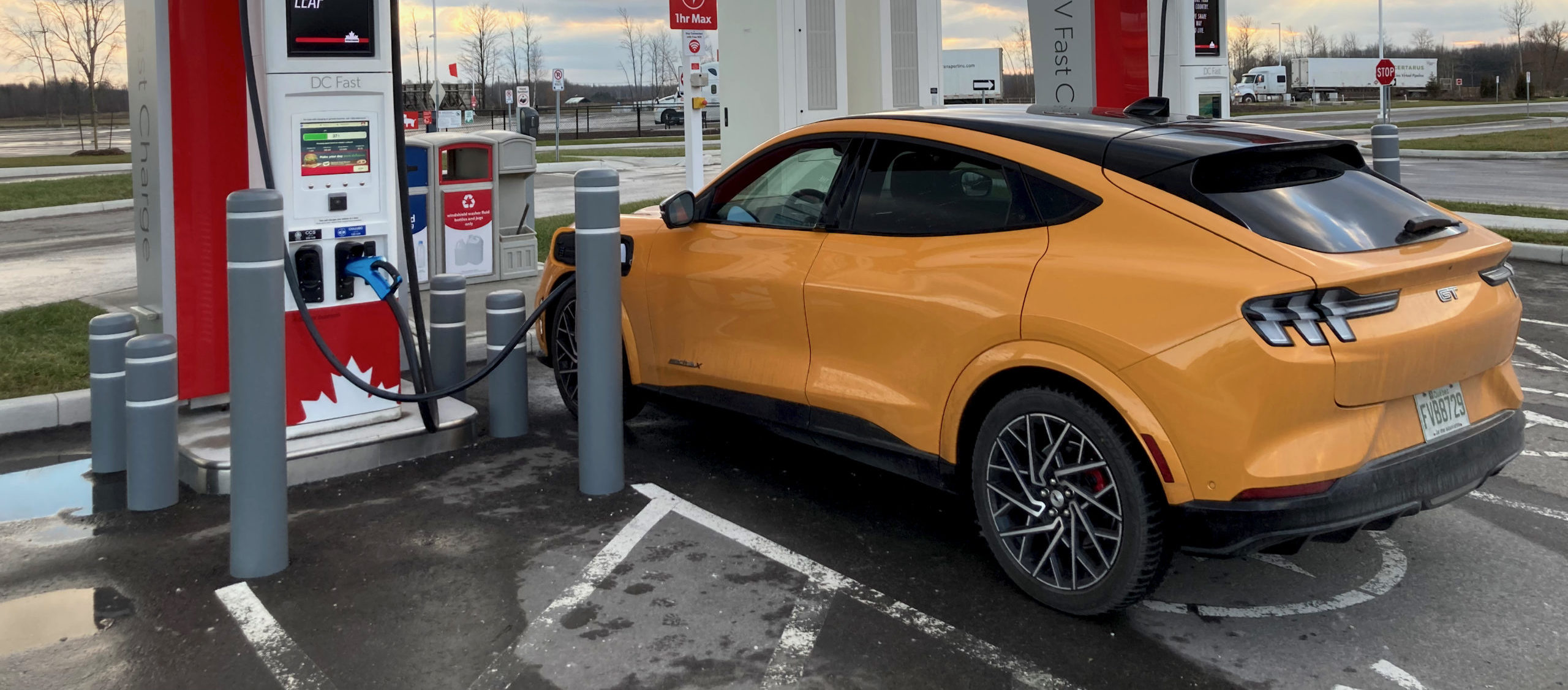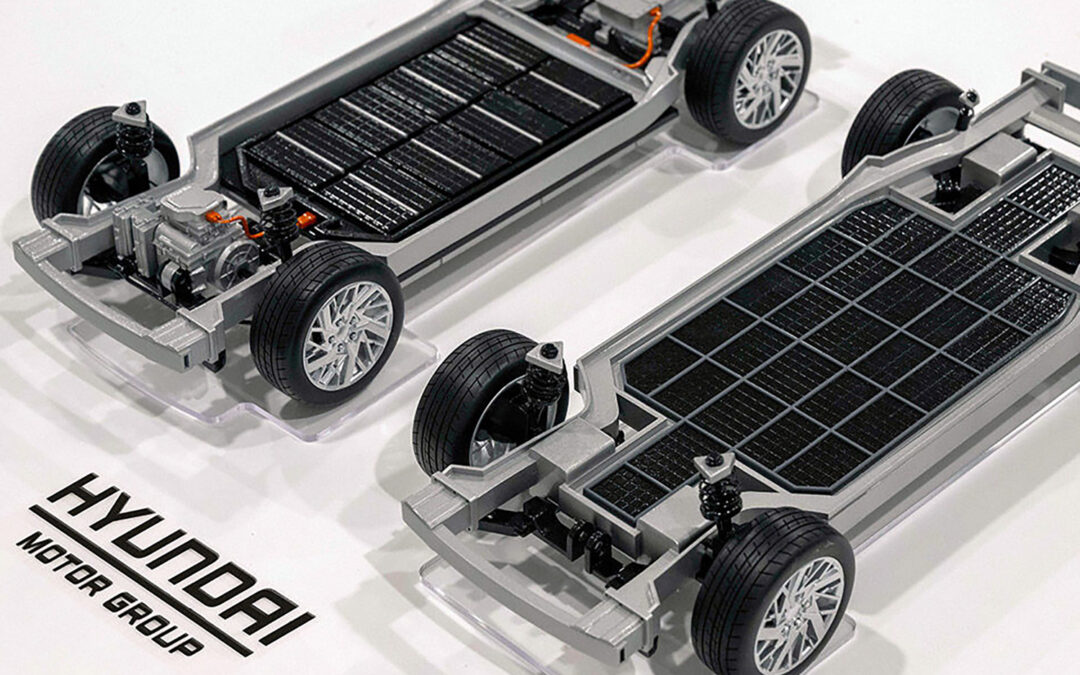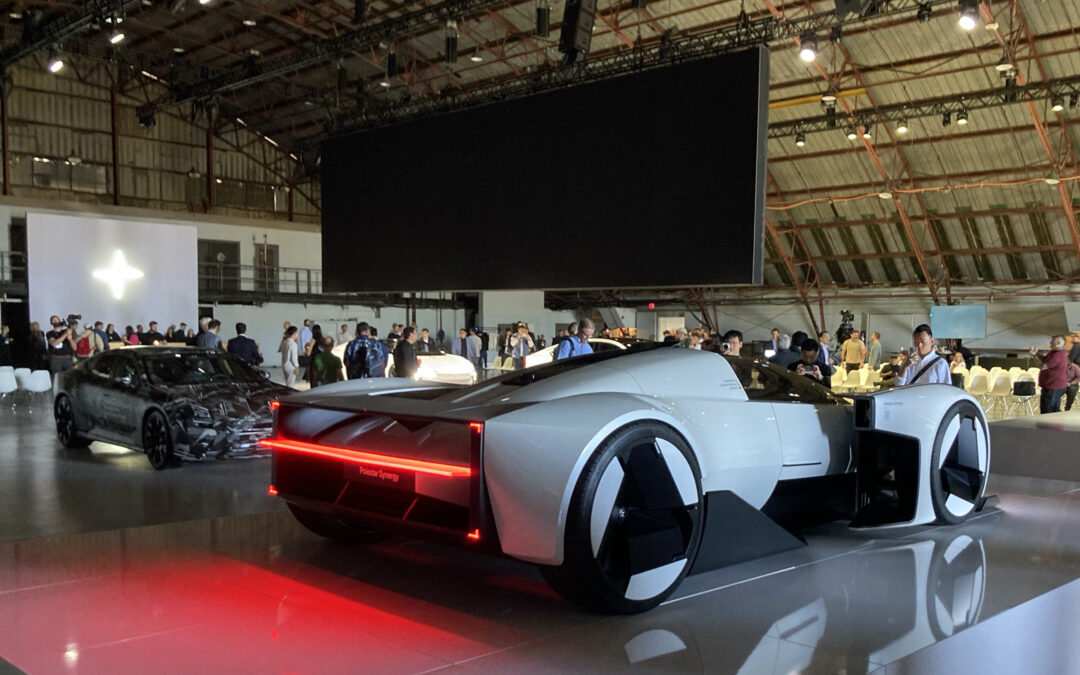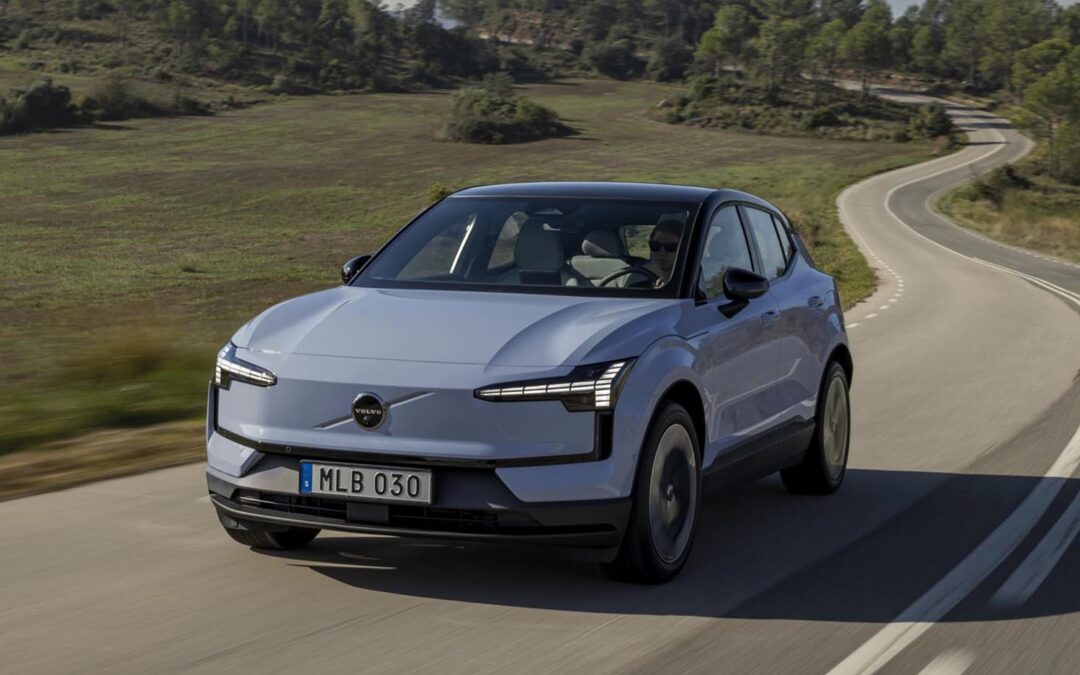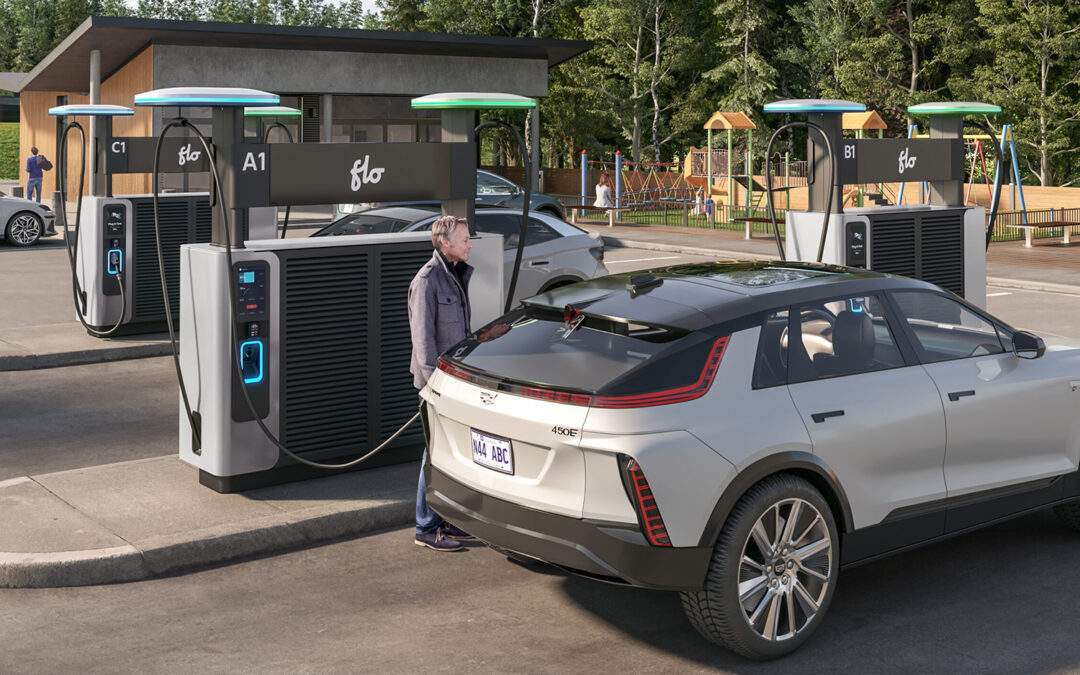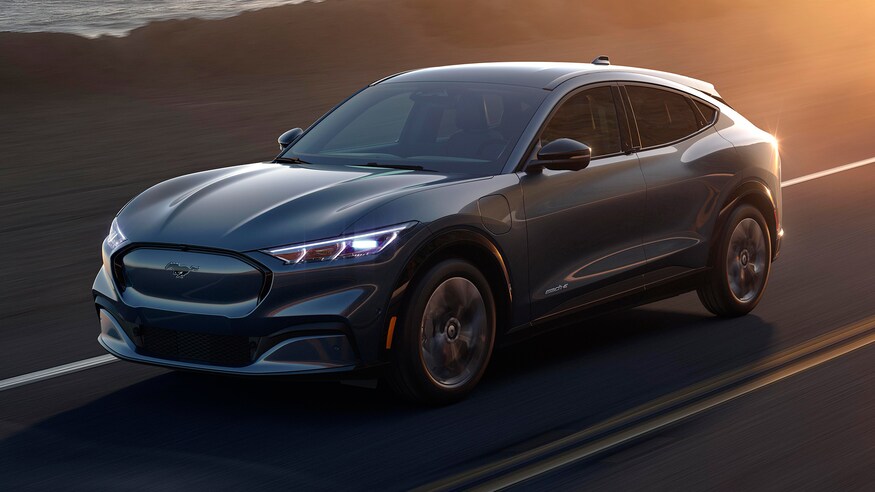Owning an electric vehicle has its ups and downs. One of the greater benefits has to be having a home charging unit, where your EV can sit charging overnight in your driveway or garage and you leave every morning with a full battery; you can’t do that with a gas-powered car.
But what if you can’t have a home charger? The installation can be too costly for some homeowners, as we outline here. Or, you have street parking or, like me, you live in an apartment building or condo that doesn’t offer any type of charging. Does that mean driving an EV is impossible?
The short answer is no, it’s entirely possible to own an EV. But there’s no denying it makes life a bit more difficult, and more thought has to be used to keep that battery topped up. It all depends on your driving and day-to-day habits, the location of nearby chargers, and your willingness to plan your routes according to those locations. And to be fair, it may not be for everyone.
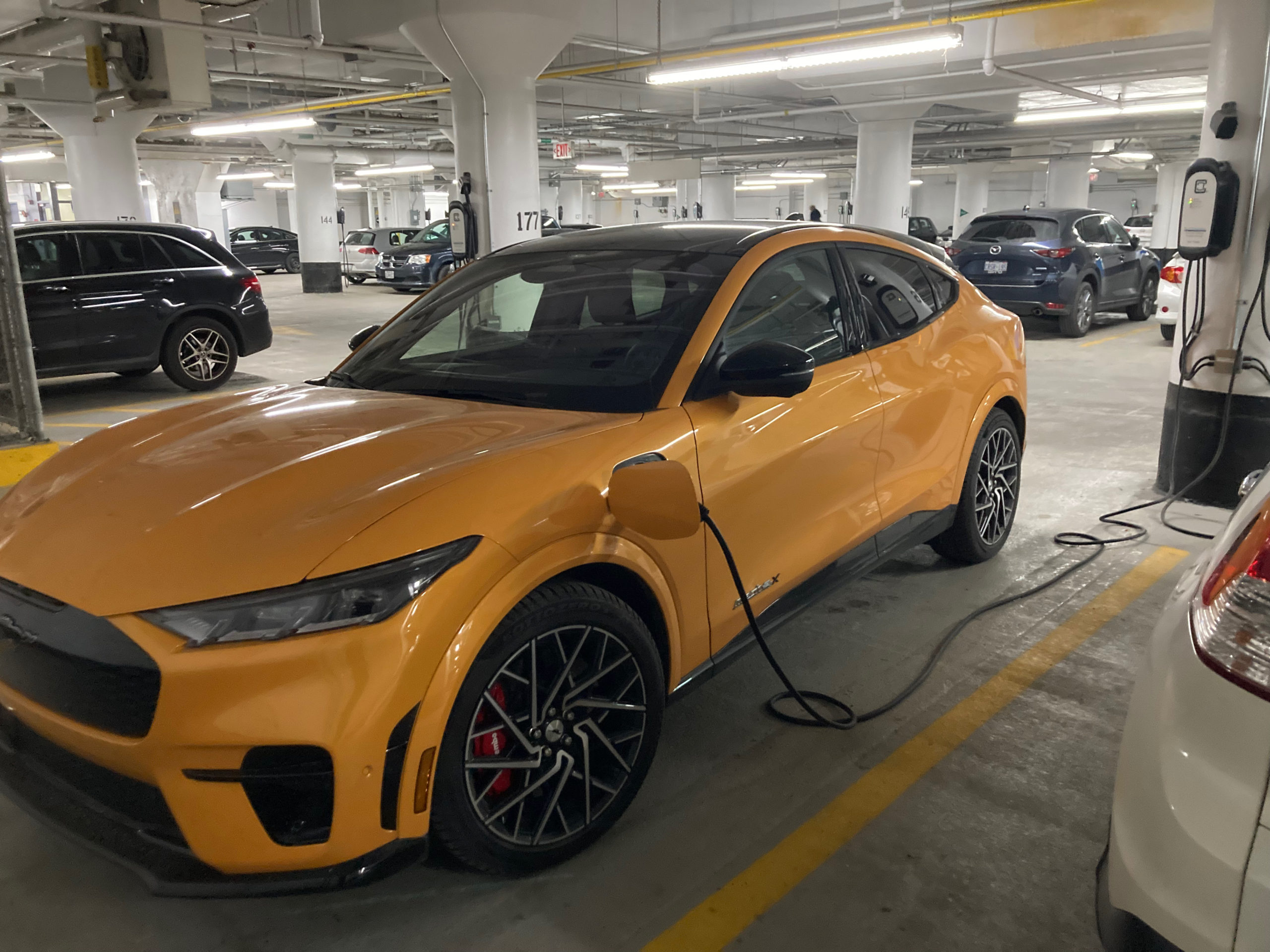
2022 Ford Mustang Mach-E under charge
Recently, I had a Ford Mustang Mach-E GT for a week-long test. But without a home charger, I had to force myself to think about my driving, plan ahead and make sure I kept an eye on my battery range. And it turned out to be easier than I first thought.
I’ve charted my week of driving and charging here; I don’t commute for work, but I did force myself to drive every day, even with a couple longer trips out of town. And I survived; can you? Find out at the end of the article.
Monday
I pick up the Mach-E in Mississauga at the fleet service, and thankfully they’ve charged it to 92 per cent with 279 km of range. The drive home is right across the Greater Toronto Area (GTA), and it takes almost an hour to get there. But that route is only around 40 km (thanks, Toronto traffic), and I arrive with 82 per cent battery and a full 244 km left in the battery. No anxiety yet.
Tuesday
It’s full-on winter this morning, but I have to go downtown Toronto to renew my passport. While I still have 82 per cent charge, my distance is now just 212 km, due to the frigid temperatures, though that’s still more than enough for what I need today. And as I get downtown to my destination, I realize there are plenty of Level 2 chargers available in various parking garages in the neighbourhood.
Sure, they’re free to use, but that doesn’t cover my $16 parking charge. Thankfully, most of the chargers aren’t engaged. In the hour I was away, my battery bumped to 85 per cent and, in the warmer underground garage, I have a full 220 km of range. By the time I get home, I’m back to 81 per cent and 210 km of range.
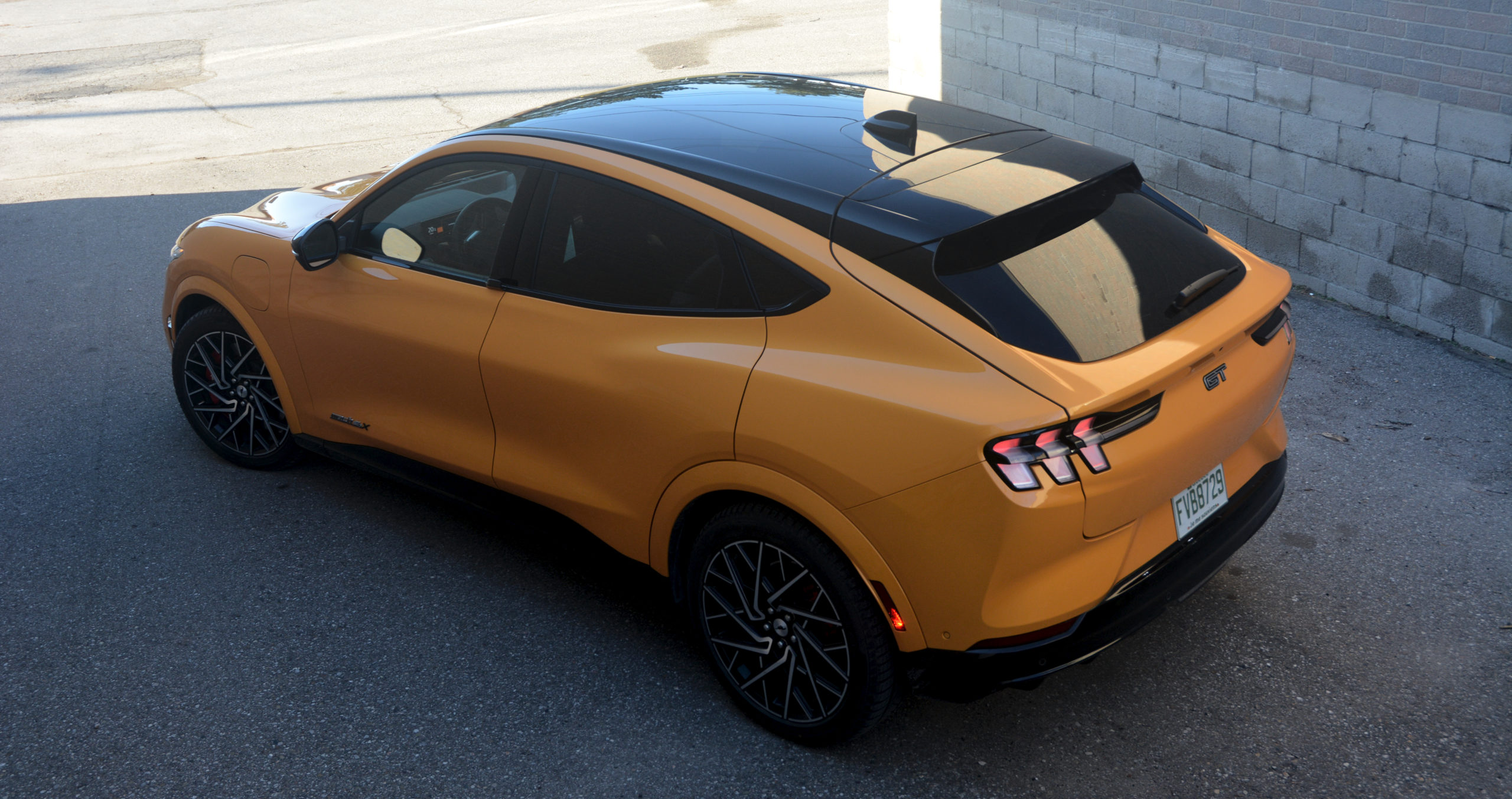
2022 Ford Mach-E GT
Wednesday
A few small chores to do today, but the sub-zero temperatures have dropped my range to 195 km. But no matter; picking up groceries and such, my trip was just more than 6 km, so I return with 78 per cent battery and 184 km of range. There’s no reason to feel anxious about that.
Thursday
Road trip! Time to get out of the city and find something a little more sedate. My destination is Stouffville, a quaint little town roughly 45 km north-east of Toronto. There’s still 78 per cent charge, with 182 km of range, so I’m really not worried. By the time I get there, I still have 57 per cent of my battery left, with 134 km in the bank.
After a nice dinner and a relaxed drive home, I park the Mach-E with 41 per cent of battery and 95 km of range. The whole round trip was 98 km.
Friday
I’ve got plans for another road trip on the weekend, so I need some juice. A couple kilometres from my home is the Evergreen Brick Works, a converted brick factory that is now an event and nature space, complete with Level 2 chargers from SWTCH that also happen to be the closest to my apartment. After downloading the app, I plug in and head home to continue work; thankfully, a friend is there to give me a ride. After a little more than five hours, I take a long walk back to find the Mach-E now has 74 per cent with 192 km of range. Not exactly the most convenient place to charge, but it was still the best option. Total cost: $9.13.
Saturday
I’ve got some family time planned today, with a longer drive up north to Alliston, ON, first to see my uncle. I leave with 70 per cent and 189 km to go, and by the time I get there, the battery is down to 42 per cent and 127 km.
After a short drive around his house, where I let him behind the wheel for a brief introduction to EVs, I head back to the highway, but before I get there I need to top up again, and this time I’ve found a PetroCanada Level 3 DC fast charger. It’s located at a large convenience store with a restaurant, so I plug in and spend a half hour using the facilities, getting water and checking my emails. By the time I’m done, the Mach-E has gone from 34 per cent charge to 80 per cent, with 270 km available. Total cost: $9.90.
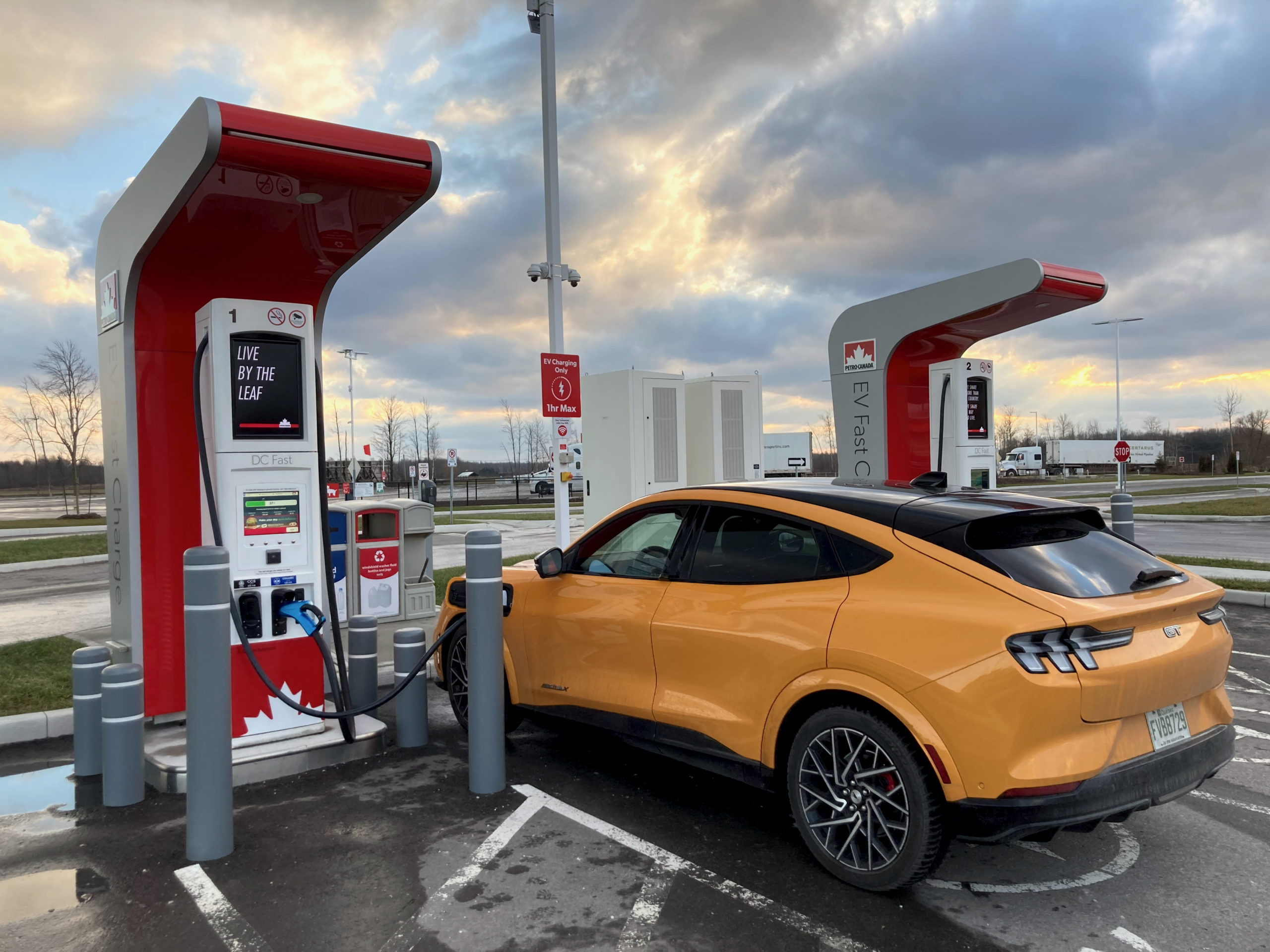
Charging the 2022 Ford Mach-E GT at the PetroCanada fast charger near Alliston, ON
I make one more stop on the way back to an aunt’s home in Newmarket, and I give the whole family a ride around to experience the silent drive and surprising acceleration of the Mustang Mach-E. By the time I get home, I’ve put on 244 km on the whole trip, with 45 per cent still in the battery, good for 124 km of range.
Sunday
It’s a day of rest; I drive for groceries, and that’s it.
Monday
Time to take the car back to Mississauga. I’ve got 36 per cent power with 85 km of range, which is more than enough for the trip. But I’d like to top off the battery as a courtesy, so just off my route I locate a Level 3 fast charger in a public underground garage. But here’s the problem that many EV drivers have and will face: when I get there, all the chargers in the garage are out of service.
With time running out, I had to return the Mach-E. By the time I cross the GTA and turn off the car in the lot, the battery is at 20 per cent, with 50 km of range. That’s as close as I get during my week to being even slightly concerned about getting to my destination.
Can you do it?
So, that wasn’t too bad, in my opinion. As I don’t commute on a regular basis, I could normally leave the car for days on end without driving, and still have enough for longer trips. And those nearby chargers at the Brick Works are always there. This week has showed me that it might be easier than most people think to own an EV without home charging.
The key is, you need to be able to weave your charging into your regular life to make it work. It might mean changing where you shop for groceries, because one market or mall offers chargers. Maybe you can charge at your office, or there is public infrastructure nearby where you can leave the car for your workday while plugged in. And maybe there is a fast Level 3 charger in your vicinity, so you take just 30 minutes out of your week or every few days for a recharge while you go for a walk (which comes with its own mental and physical benefits, let’s not forget).
It’s not without problems, of course: your plan of stopping at a charger may be foiled because it’s being used or out of commission. And while urban areas of Canada have seen a huge increase in charging infrastructure (there are more than 15,000 public stations across Canada), many other suburban and rural areas have yet to catch up. So, admittedly it’s not for everyone.
The point here is, don’t be discouraged, but do be realistic.
